Elephant Bush Garden Ideas: Creative Ways to Beautify Your Space
Looking to add some greenery to your home or garden? The elephant bush, known for its compact growth and vibrant foliage, could be just what you need. This hardy succulent is easy to care for and can thrive both indoors and out.

Planting elephant bush can bring a touch of nature’s beauty into your living space. Its bright green leaves and unique structure make it a versatile choice for various garden ideas. Whether you’re an experienced gardener or new to plant care, elephant bush offers endless possibilities for creativity.
1) Succulent Ground Cover
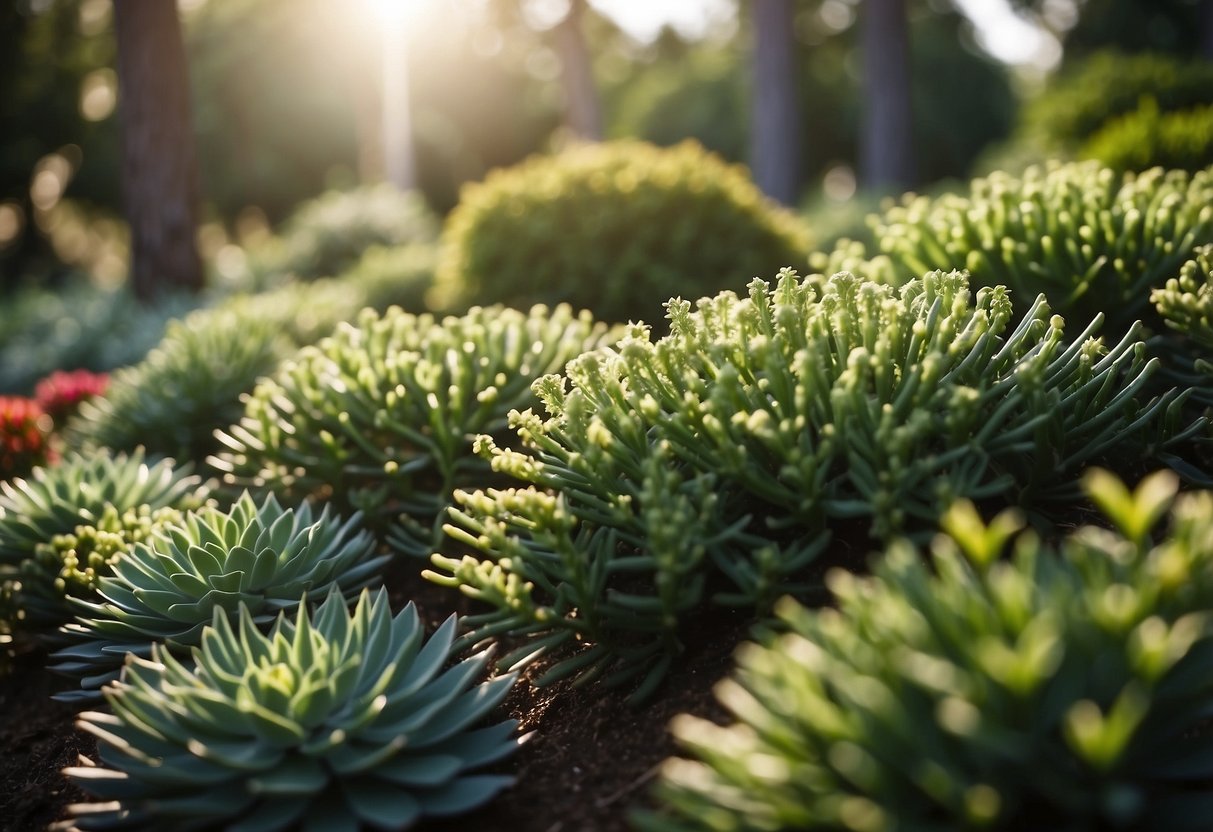
Elephant bush, also known as Portulacaria afra, is a great choice for succulent ground cover.
This plant has bright green circular leaves and maroon stems, resembling a small jade plant. It thrives in both full sun and partial shade.
Using elephant bush as ground cover can give your garden a lush, green look. To see more ideas, check out this article on Houzz.
2) Potted Patio Decoration

Using elephant bush in your patio decoration is a great idea! This hardy succulent thrives in various containers.
Pick a large ceramic or terra cotta pot for a classy look. Ensure the pot has drainage holes to prevent waterlogged soil.
Pair the elephant bush with spillers like Wave petunias or million bells to add a vibrant contrast. Your patio will pop with color and style.
3) Miniature Bonsai Tree
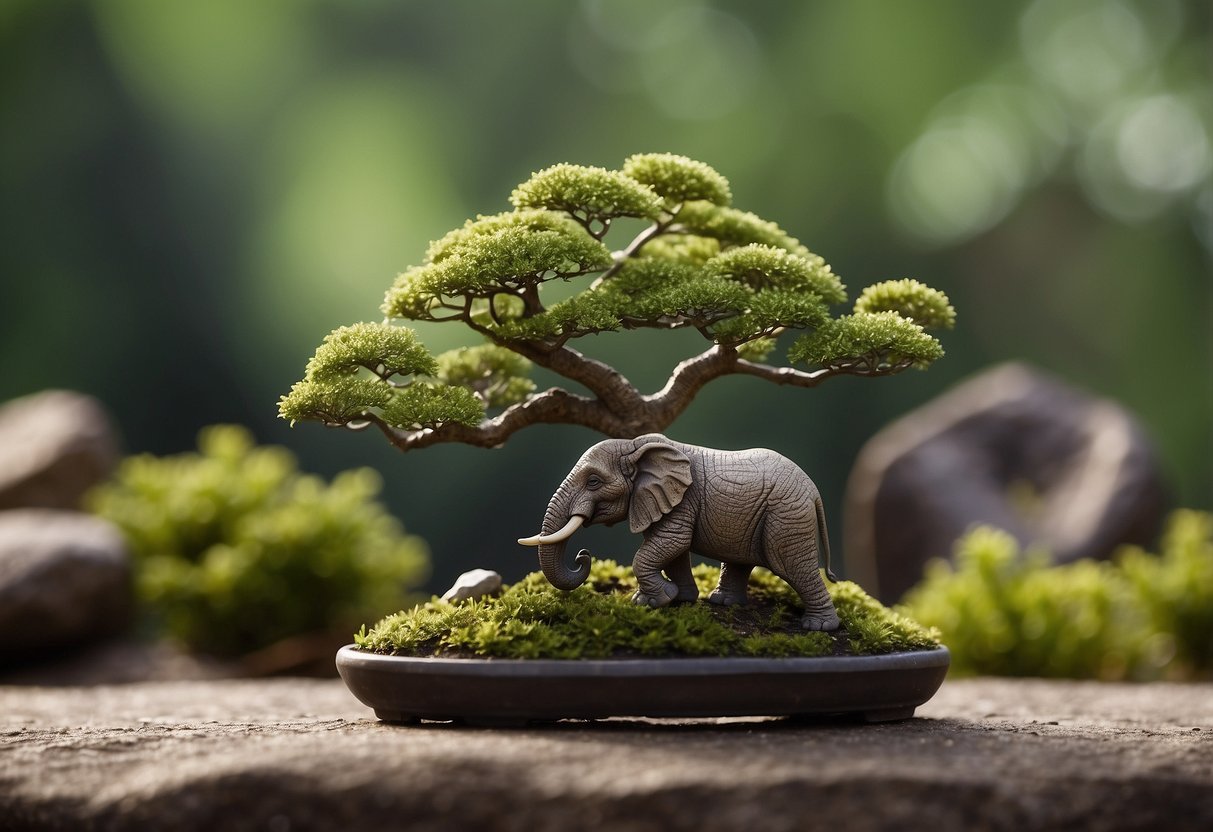
The Elephant Bush, also known as Portulacaria afra, makes a delightful miniature bonsai tree. Its thick, woody branches and vibrant green leaves create a striking look.
This type of bonsai is perfect for beginners because it’s drought-tolerant and low-maintenance. Elephants actually love munching on this plant in the wild!
Give your garden a unique touch by adding a miniature bonsai tree. The compact size makes it ideal for small spaces, adding charm and beauty.
4) Indoor Sunroom Plant

An elephant bush can be a perfect addition to your sunroom. This plant loves bright, indirect light, which makes it thrive in a sun-filled space.
Place your elephant bush in a pot with drainage holes and use well-draining soil. Water it sparingly, only when the soil feels dry to the touch.
Your sunroom can become a lush retreat with the vibrant, green leaves of the elephant bush. This plant also tolerates indoor conditions well, making it a low-maintenance option.
5) Zen Garden Feature

Adding a Zen garden to your elephant bush garden can create a peaceful retreat. A simple way to start is with a stone bridge over a white pebble river. This can be a beautiful focal point.
You can also use dark gravel paths alongside your elephant bush plants to enhance the serene atmosphere. These paths are easy to maintain and look stunning.
6) Rock Garden Accent

Adding elephant bush to your rock garden can make it stand out. This plant has small, round leaves and can handle dry conditions well. Place it near boulders or among gravel for a natural look.
For a pop of color, plant it alongside golden barrel cactus or lavender. Mixing textures and heights will give your garden more depth. Check out these ideas on rock garden design for more inspiration.
7) Hanging Basket Display
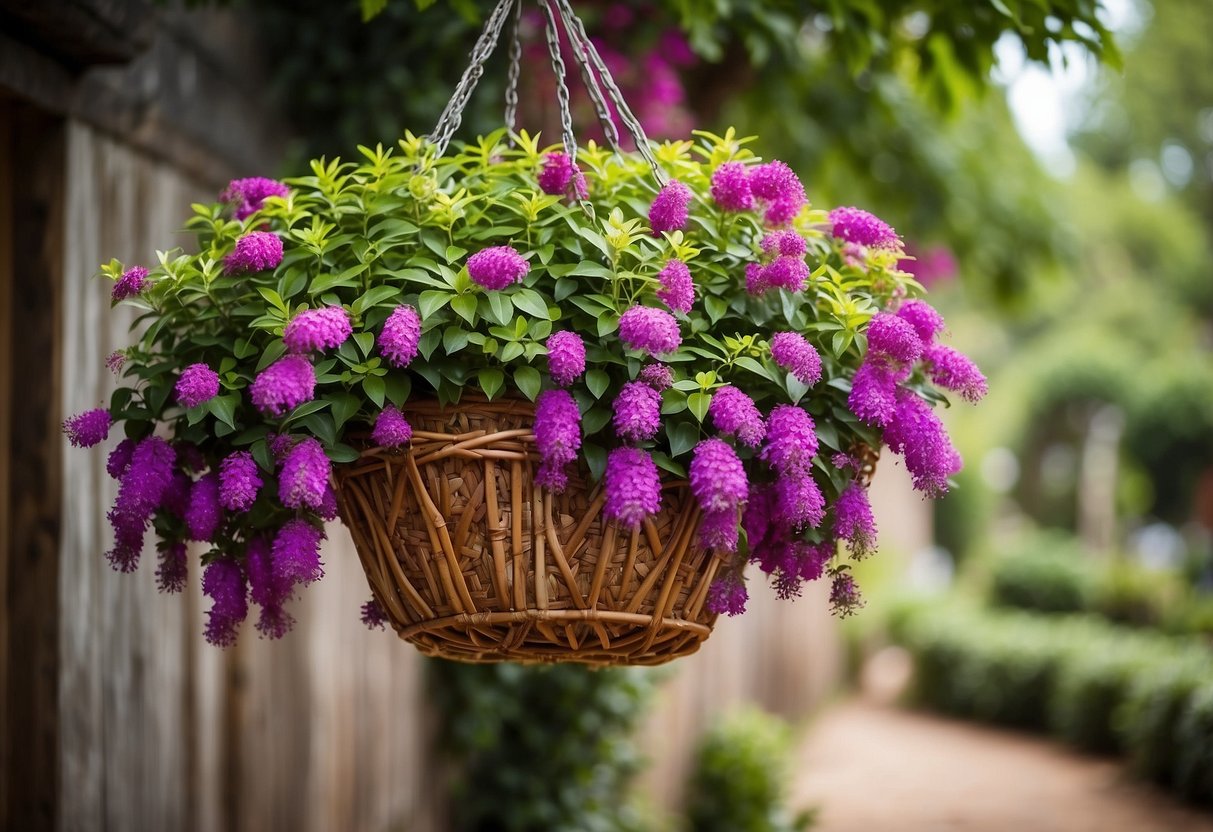
You can create an eye-catching display by planting elephant bush in hanging baskets. These plants have shallow roots, making them perfect for this setup.
Elephant bush needs well-draining soil to thrive. Make sure to use sandy or rocky soil.
Place your hanging basket in a sunny spot. Elephant bush loves intense sunlight and will flourish with a few hours of direct sun each day.
Check out these tips for caring for elephant bush to keep your hanging basket looking great.
8) Terrace Border Planting
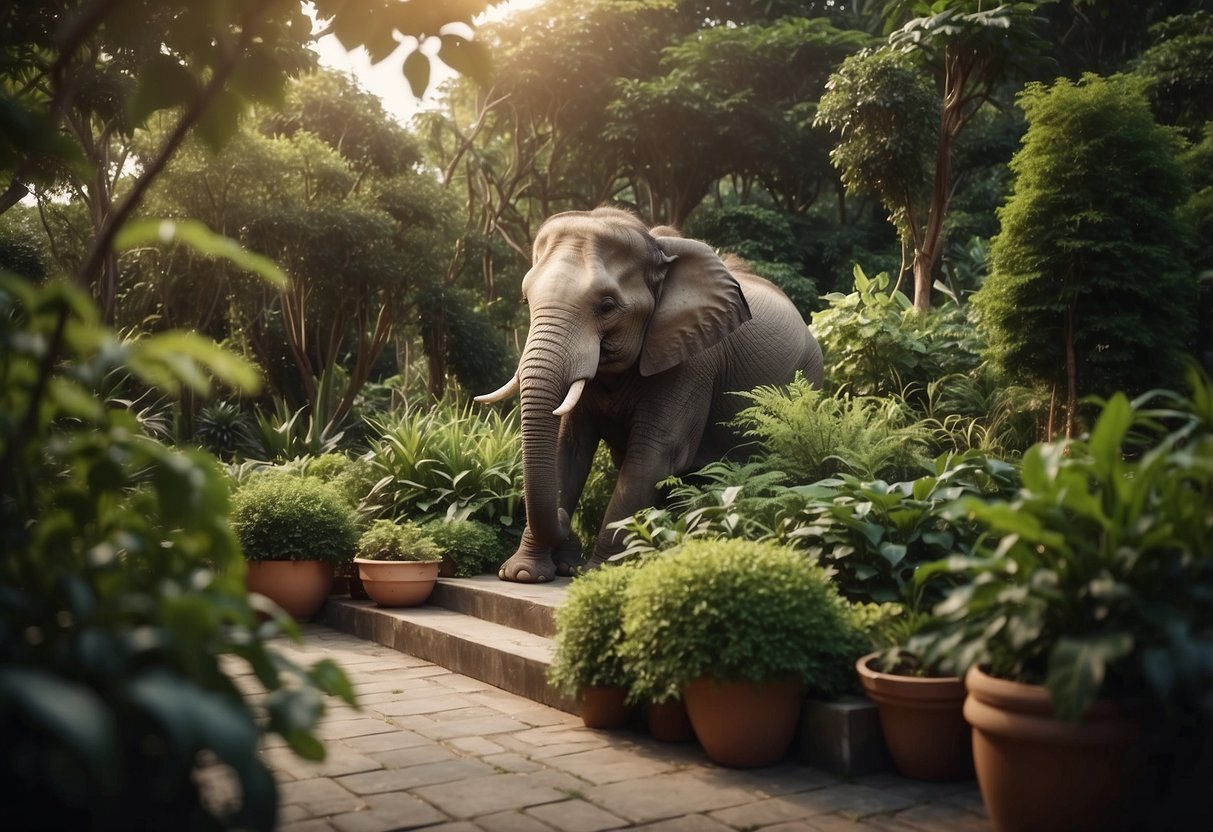
Creating a terrace border is a great way to define the space and add vibrancy. You can use a mix of plants to achieve this effect.
Consider incorporating low-maintenance succulents for an easy-to-care-for option. They work well in terraces that receive lots of sunlight.
Add plants with bright foliage like ‘Everillo’ Carex to enhance the area. Their chartreuse color pairs beautifully with other plants. This combination not only looks good but also makes the space feel more open and cheerful.
9) Terrarium Centerpiece

A great way to enhance your terrarium is by using a striking centerpiece. The Elephant Bush (Portulacaria afra) is perfect. Its small, tree-like appearance adds a unique element.
Place your Elephant Bush in the middle of your glass container. It’s easy to care for and thrives in bright light. Add some small rocks around the base to complete the look.
10) Mixed Succulent Arrangement
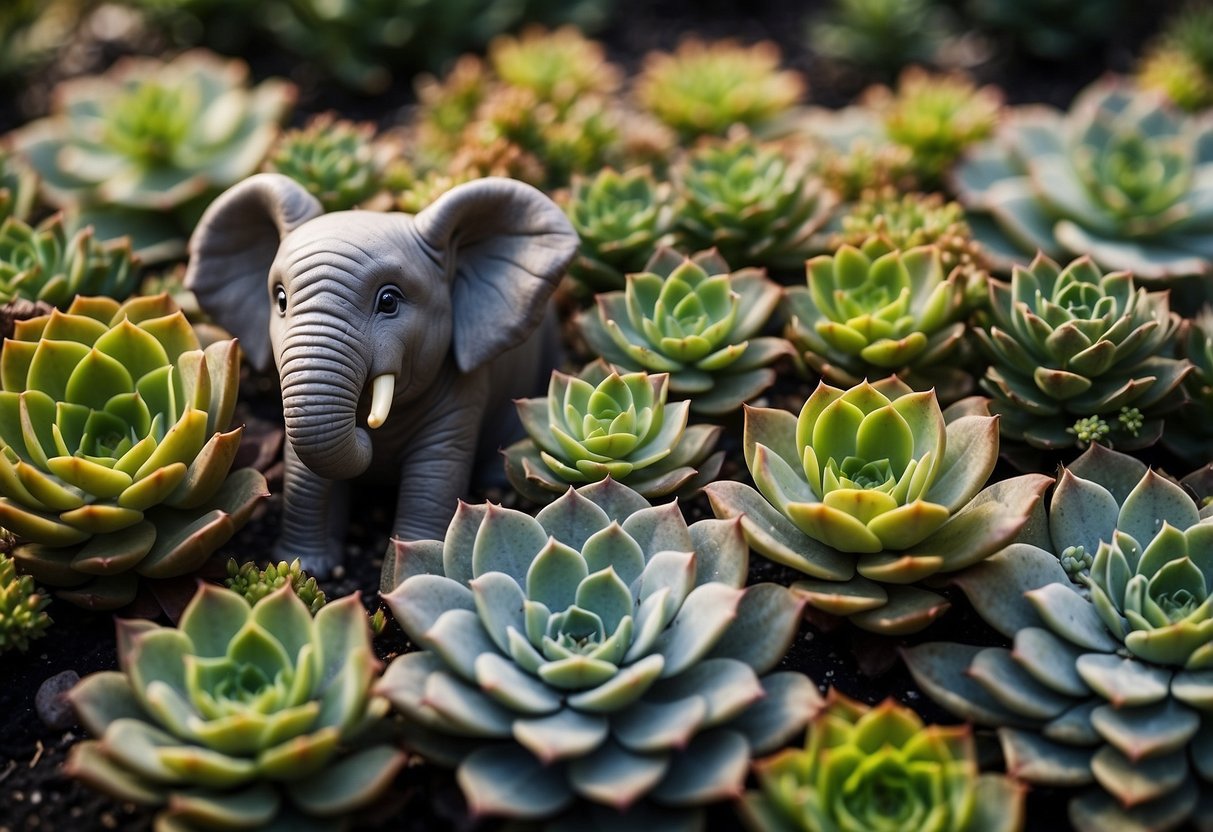
You can create stunning displays by mixing different succulent varieties. Combining low-growing succulents with taller ones adds contrast and interest.
Try arranging elephant bush with taller plants like the variegated century plant to create height.
Using asymmetrical heights, like pairing a small Portulacaria with a large Echeveria, can make your arrangement stand out more.
Benefits of Growing Elephant Bush

Growing an elephant bush provides drought tolerance and requires minimal maintenance, making it ideal for busy gardeners or those living in dry regions.
Drought Tolerance
The elephant bush is highly drought-tolerant. This succulent can survive with little water, which makes it perfect for arid climates or if you want to reduce your water use. Native to South Africa, the plant has adapted to thrive in dry conditions.
The elephant bush stores water in its fleshy leaves, so it doesn’t need frequent watering. Once established, you might only need to water it once every few weeks. This plant can handle long periods without rain, making it a great choice for gardens with low rainfall.
Low Maintenance
The elephant bush is nearly effortless to care for, which makes it a good option for both beginners and experienced gardeners. It thrives in well-draining soil and prefers lots of sunlight. You don’t have to worry about fertilizing it much either; a little bit every now and then will do.
Pruning is minimal. You might trim it occasionally to maintain its shape or to remove any dead or damaged leaves. This plant is also less prone to pests and diseases, making it even easier to care for. With its hardy nature, you’ll find this plant requires low upkeep while adding greenery to your space.
Ideal Conditions for an Elephant Bush Garden

To grow a thriving Elephant Bush garden, you need to understand its light and soil needs. These conditions are essential for healthy growth and vibrant foliage.
Sunlight Requirements
Elephant Bush, also known as Portulacaria afra, thrives under plenty of sunlight. Aim for 4-6 hours of direct sun each day. If you live in a hot climate, some afternoon shade can help protect the plant from intense heat.
The leaves of the Elephant Bush can sunburn if exposed to too much direct light, especially in the peak afternoon hours. If growing indoors, place the plant near a south or east-facing window for optimal light exposure. Consider using a grow light during the winter months to supplement the reduced sunlight.
Soil Preferences
For your Elephant Bush to grow well, the right soil is critical. Use sandy, rocky, and well-draining soil. This prevents water from pooling at the roots, which can cause rot. A cactus or succulent potting mix is ideal.
If you make your own mix, combine regular potting soil with sand or perlite to improve drainage. The pH level should be slightly acidic to neutral (around 6.0 to 7.0). Avoid heavy, clay-rich soils as they retain too much moisture.
When planting outdoors, select a site with good drainage. Raised beds or pots with drainage holes can also help manage water levels, ensuring your Elephant Bush stays healthy and vibrant.
Creative Elephant Bush Garden Ideas

Elephant bush is a versatile succulent that can thrive in various settings, adding unique beauty to both indoor and outdoor gardens. From container gardening to rock garden integration, here are some innovative ideas to incorporate elephant bush into your garden.
Container Gardening
Using containers for your elephant bush offers flexibility and ease of care. Choose pots with good drainage to prevent root rot, as elephant bush needs well-draining soil. You can select colorful or decorative pots to match your garden’s aesthetic.
Place containers in bright sunlight, either indoors near a window or outside on a patio. Containers allow easy movement, so you can bring them indoors during colder months. This method also gives you the freedom to create mini-gardens. Mix your elephant bush with other succulents like echeveria or jade plant for an appealing variety.
Tips for Success:
- Use a cactus soil mix.
- Water thoroughly but infrequently.
- Rotate the pot occasionally for even sunlight exposure.
Rock Garden Integration
Incorporate elephant bush into your rock garden for a stunning, low-maintenance display. The plant’s vibrant green leaves and reddish stems contrast beautifully with rocks and pebbles. It’s well-suited for rocky soil, as it mimics its natural habitat.
Plant elephant bush among rock crevices and slopes where the soil drains quickly. It thrives in full sun, making it ideal for open spaces. You can also combine it with other drought-tolerant plants such as sedums or agaves for a cohesive look.
Essential Steps:
- Plant in well-draining, sandy soil.
- Arrange rocks to create natural water channels.
- Water sparingly to prevent overwatering.
By using these creative approaches, you can enjoy the stunning beauty of elephant bush while ensuring it thrives in your garden.







